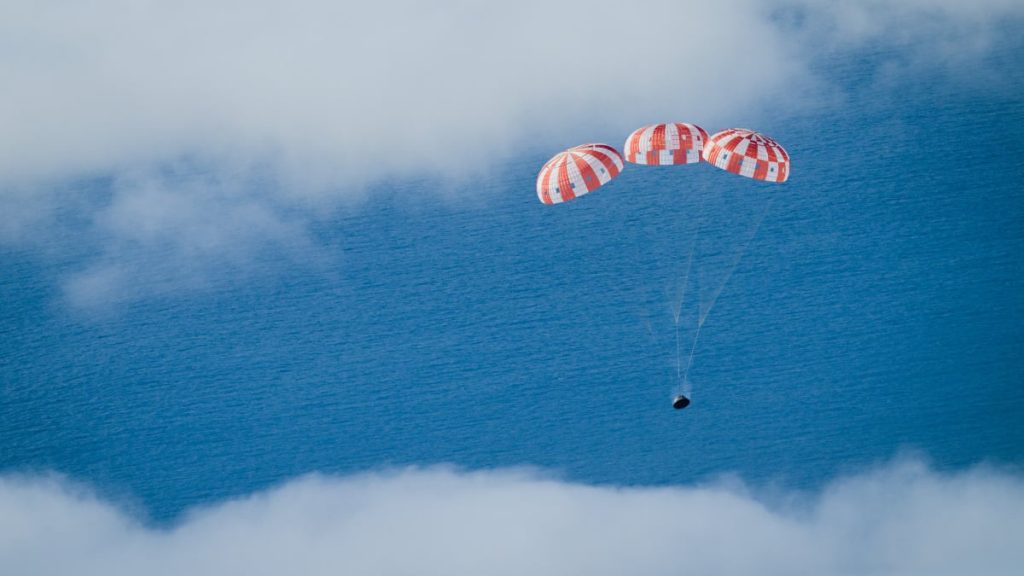
New NASA drone video shows Artemis spacecraft sticking the landing (Image Credit: Mashable)
NASA ended the year on the highest of notes with the successful return of Orion, the new moonship intended to one day send astronauts back to the lunar surface.
After a more than 25-day stress test in deep space, putting 1.4 million miles on Orion’s odometer, the Artemis I mission finished with a splash in the Pacific Ocean off the Baja California peninsula of Mexico at 12:40 p.m. ET on Dec. 11. A U.S. space agency drone captured this historic feat — labeled by top-ranking mission leaders as “textbook” — in a five-minute video released on Wednesday.
Scored with a symphony of helicopter blades whirring, the footage (below) shows Orion emerging from the clouds after an unprecedented re-entry technique, a so-called “skip entry.” During the maneuver, the moonship skipped across Earth’s atmosphere before plummeting toward the sea.
The mission ushered in the hottest and fastest human spacecraft landing in history. Orion pierced the atmosphere while traveling 25,000 mph — 32 times the speed of sound. By comparison, the Space Shuttle’s descent reached about 17,500 mph, said NASA Administrator Bill Nelson, a former astronaut.
The extreme friction, intended to slow the new moonship down, generated 5,000 degree Fahrenheit temperatures.
Mission leaders say the advantage of this scorching entry is breaking up the intense G-force loads — the heavy feeling pushing against a body during extreme acceleration — into two smaller events. Though the capsule doesn’t have any people onboard now, NASA believes mastering the skip entry will keep Artemis astronauts who would experience those effects safer in the future. When humans are subjected to forces much greater than normal gravity, their hearts are put under tremendous pressure, causing dizziness and sometimes blackouts.

Credit: NASA
Want more science and tech news delivered straight to your inbox? Sign up for Mashable’s Top Stories newsletter today.
The drone video shows Orion acing the crucial test of its new-age heat shield, surviving the re-entry and slowing down to 20 mph under a canopy of three parachutes as it plops into the ocean. NASA moved the splashdown site south to avoid bad weather. Normally, the team would plan for a landing off the coast of San Diego, California.
Navy divers on several small boats recovered the moonship after splashdown. Using a special cable, they pulled Orion into a well deck of the USS Portland.
The spacecraft is now on a truck headed back to NASA’s Kennedy Space Center in Florida. Next, technicians will open the hatch and unload cargo and science experiments, including the three test dummies, for further studies.





